
Visit Shrines
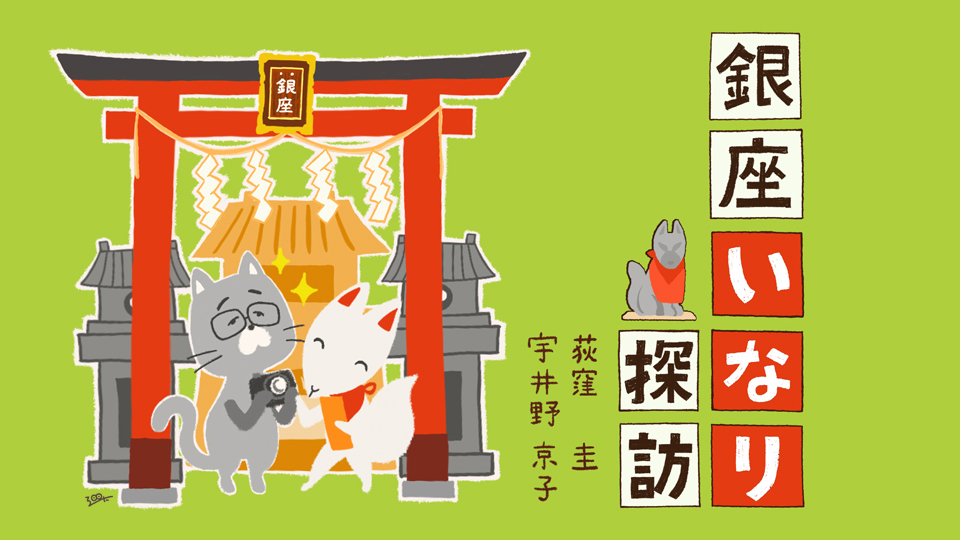
Visit Ginza’ Inari Shrines Vol. 15 Ryuko Fudo-son
2023.08.01
Despite the title of our series “Visiting Ginza’s Inari Shrines,” our destination this time is not an Inari shrine. However, it is an important place of prayer for Ginza and is located in its center. Ryuko Fudo is open to the public, but it may have gone unnoticed by many.

- Uino
- This is our destination this time.
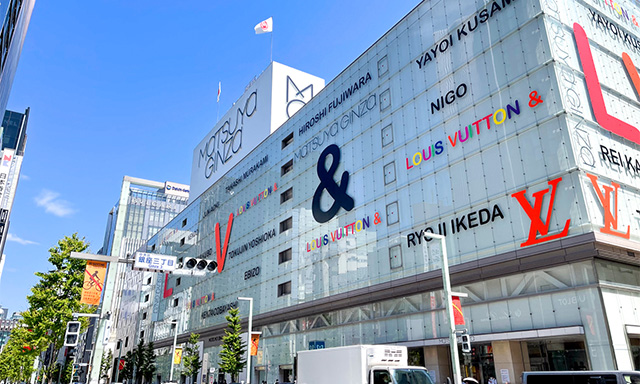
It is one of the largest glass panels, completed in 2006.
- Ogikubo
- We are going to Matsuya Ginza in Ginza 3-chome. Then, are we going to an Inari shrine on the rooftop?
- Uino
- You are half right. We are indeed going to the rooftop of Matsuya Ginza, but it is not an Inari deity that sits there.
- Ogikubo
- That comes as a surprise. With Mimeguri Inari on the rooftop of Mitsukoshi department store, Kakugo Inari on the rooftop of GINZA SIX (formerly, Matsuzakaya), Fushimi Inari on Ikebukuro Seibu, Toyoko Inari on the rooftop of Tokyu Toyoko Store, which used to be above Shibuya Station until just a few years ago, and Toyokawa Inari on Shinjuku’s Odakyu Department Store, which only recently closed, I had thought that Inari shrines, representing commercial prosperity, on department store rooftops were the rule.
- Uino
- Yes, there seems to be a strong relationship between large merchants, such as department stores, and Inari shrines. Well, let us go inside.
- Ogikubo
- With its modern façade, Matsuya Ginza looks new, but the building itself is quite old.
- Uino
- My image of Matsuya Ginza is a design-conscious department store, and I had never thought of it as long-established. How long has it been in business?
- Ogikubo
- It opened in 1924 (Taisho 14). Matsuzakaya opened in 1923 (Taisho 13), so it was right after Matsuzakaya.
- Uino
- Today, the underpass to the metro station is decorated with design tiles. The retro-modern look is really beautiful.
- Ogikubo
- It is surprising that they have kept a part of the building completed in 1924. Here is a photo from back then.
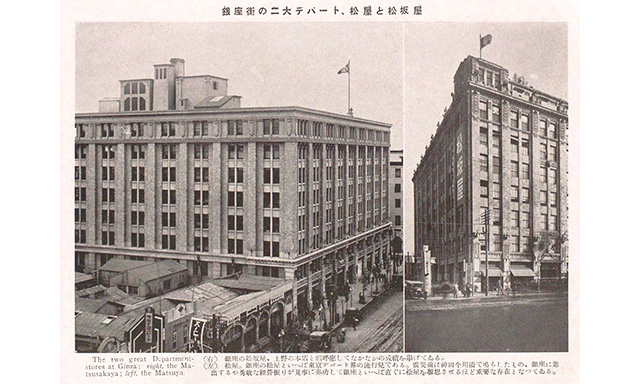
(from the National Diet Library Digital Collection)
An 8-story building like today.
- Uino
- It was an eight-story building, just like today. Now that I look closely with that knowledge, I notice traces of history here and there.
- Ogikubo
- The old building occupied about half of this block in Ginza 3-chome where Matsuya Ginza stands now. The building has been extended since then, and today, Matsuya Ginza stretches from this block on Matsuya Dori to the end of Maronie Dori. The new façade makes it difficult to recognize the border.
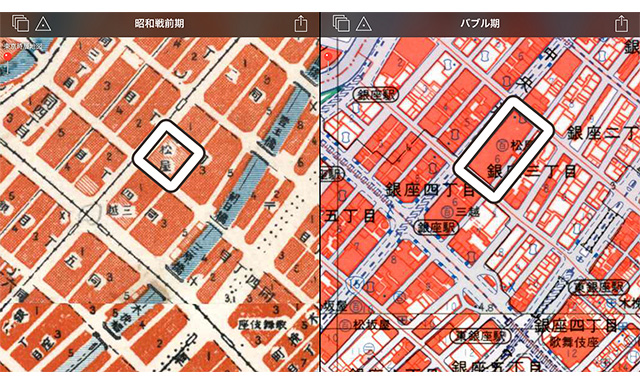
Matsuya has expanded during the two periods.
Based on ”Tokyo Jiso Chizu for iPad” (Japan Map Center)
- Ogikubo
- If you look carefully, you can notice that the space next to the escalator that we are on has a seven-story ceiling. This open ceiling space was created when the building was first built.
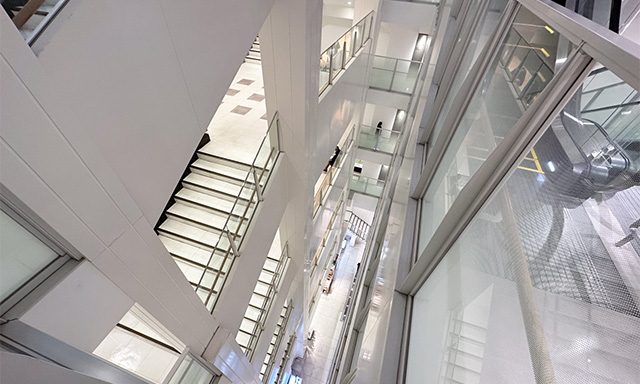
has had an open ceiling since Matsuya Ginza’s opening.
- Uino
- Now that you have mentioned it, I am curious to know which part of the building was built in the Taisho period.
- Ogikubo
- I am quite sure you are curious. However, if we start exploring the department store, we will run out of time, so let us proceed to the rooftop.
- Uino
- Agreed. Let us explore the building on another occasion.
- Ogikubo
- Here we are on the roof. When you get out on the roof, there is a small area for resting and behind that…. Can you see it?
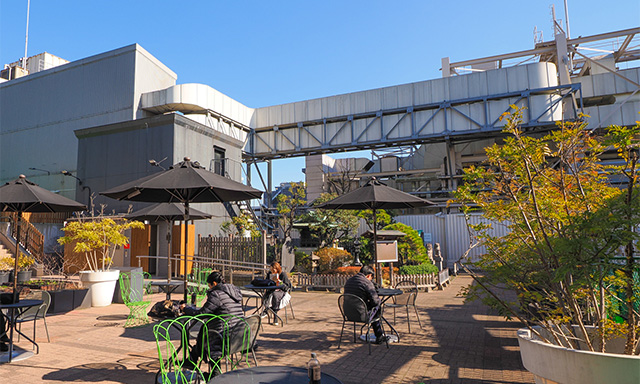
- Uino
- Yes. Let us get closer.
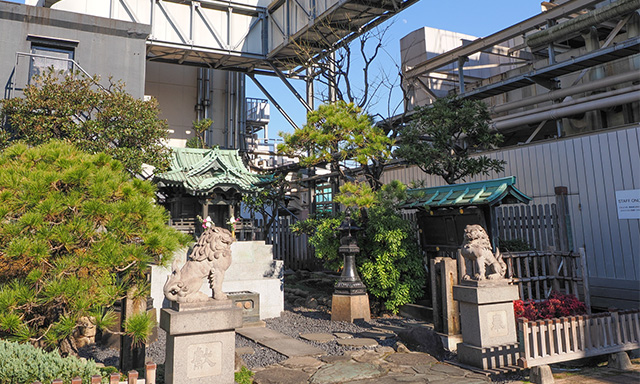
- Ogikubo
- This is not an Inari shrine. It does not even have a torii gate.
- Uino
- That is right. This not a shrine, but a Fudo temple. It is called Ryuko Fudo-son.
- Ogikubo
- Ryuko (流行), as in fashion?
- Uino
- No, it is spelled out “Ryu (龍)” as in dragon and “Ko (光)” as in light, but since the sound is the same as “ryuko” for fashion, it is often said that it is the perfect guardian god of design-conscious Matsuya Ginza, which has always been a source of new trends.
- Ogikubo
- There is an explanation of the Fudo-son’s roots in front of it. The Ryuko Fudo Myo-o Goson-zo was carved by a craftsperson during the Kamakura period and was brought here from Koya-san Ryuko-in in 1929 (Showa 4).
- Uino
- Although we were not able to dig deeper into its history, perhaps the President of the company back then had a close relationship with Koya-san. This is something I would like to investigate later.
- Ogikubo
- Let us first put our hands together in prayer. There is a panel hanging over the entrance that says “Fudo Myo-o”.
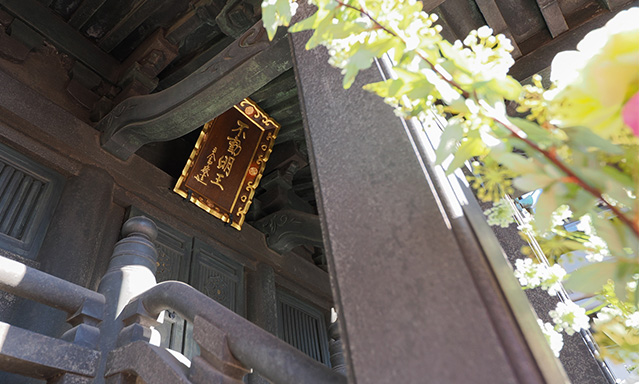
- Uino
- This rooftop area is a place where people come to rest every day, but three times a year, a priest comes from Narita-san Fukagawa Fudo-do for the regular festival. We unfortunately cannot see the Fudo Myo-o, but the regular ceremonies are held in a very special atmosphere. We can feel how the Fudo deity has been worshiped generation after generation by the people of Matsuya and how it has protected its business.
- Ogikubo
- Around the building, we can see lanterns donated by Mutsumi-kai and Shoei-kai, presumably associations of companies who have long-established business relations with Matsuya. This also tells us how the Fudo temple has been cherished over a long time.
- Uino
- When they expanded the building in 1954 (Showa 39) they installed a Siddham character representing the Shitenno (Buddhist Four Heavenly Gods) on the ceiling of the first floor. It shows the wish of the long-established department store to protect the safety of its customers.
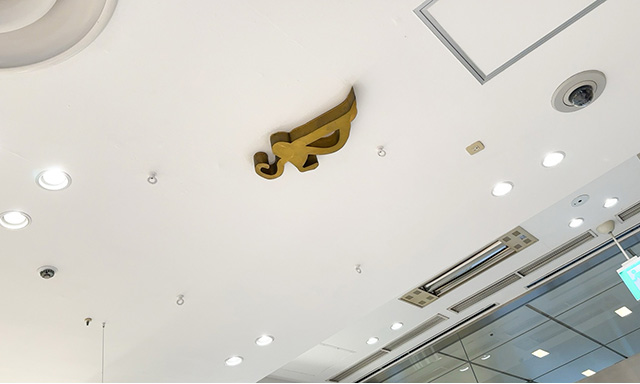
- Ogikubo
- Retail stores, such as department stores, often have an Inari shrine for business prosperity and fire prevention, but now I see that a Fudoson can also be a guardian god.
- Uino
- This small temple that the Ryuko Fudo sits in is located right in the center of Ginza today. The Ofudo-sama unwaveringly guards Ginza from its center. With its powerfulness and reassurance, the Ryuko Fudo is the perfect guardian god of Ginza. Hence, we can enjoy strolling around Ginza and visiting its shrines in safety. I hope that more people will go up to the rooftop to visit the Ryuko Fudo-son and pray that it will continue to keep us safe in our everyday lives.
All List
- 2020.05.01 Visit Ginza’s Inari Shrines Vol.2 Asahi Inari Shrine
- 2020.08.01 Vol.3 Exploring Ginza in the Edo Period on an old map
- 2020.11.01 Visit Ginza’s Inari Shrines Vol. 4 Kakugo Inari Shrine
- 2021.02.01 Visit Ginza’s Inari Shrines Vol. 5 Azuma Inari
- 2021.05.01 Visit Ginza’s Inari Shrines Vol.6 Kabuki Inari
- 2021.08.01 Visit Ginza’s Inari Shrines Vol.7 Ginza Inari in Ginza 2-chome
- 2021.11.01 Visiting Ginza’s Shrines Vol. 8 Kumagai Inari Shrine
- 2022.02.01 Visit Ginza Shrines Vol. 9 Saiwai Inari Shrine
- 2022.05.01 Visit Ginza’s Shrine Vol. 10 Mimeguri Shrine and Shusse Jizoson on the roof of Mitsukoshi Department Store
- 2022.08.01 Visit Ginza’s Shrines Vol. 11 Komparu Inari
- 2022.11.01 Visit Ginza’s Inari Shrines Vol.12 Mankin Ryujin Seiko Inari Shrine
- 2023.02.01 Visit Ginza’s Shrines Vol.13 Hachikan Shrine
- 2023.05.01 Visit Ginza’s Inari Shrines Vol.14 Hoju Inari Shrine
- 2023.08.01 Visit Ginza’ Inari Shrines Vol. 15 Ryuko Fudo-son
- 2023.11.01 Visit Ginza’s Shrines Vol. 16 Hodo Inari Shrine
- 2024.02.01 Visit Ginza’s Shrines Vol. 17 Toyoiwa Inari Shrine
- 2024.05.01 Visit Ginza’s Inari Shrines Vol. 18 Yasuhira Shrine
- 2024.08.01 Visit Ginza’s Inari Shrines: Final Edition








